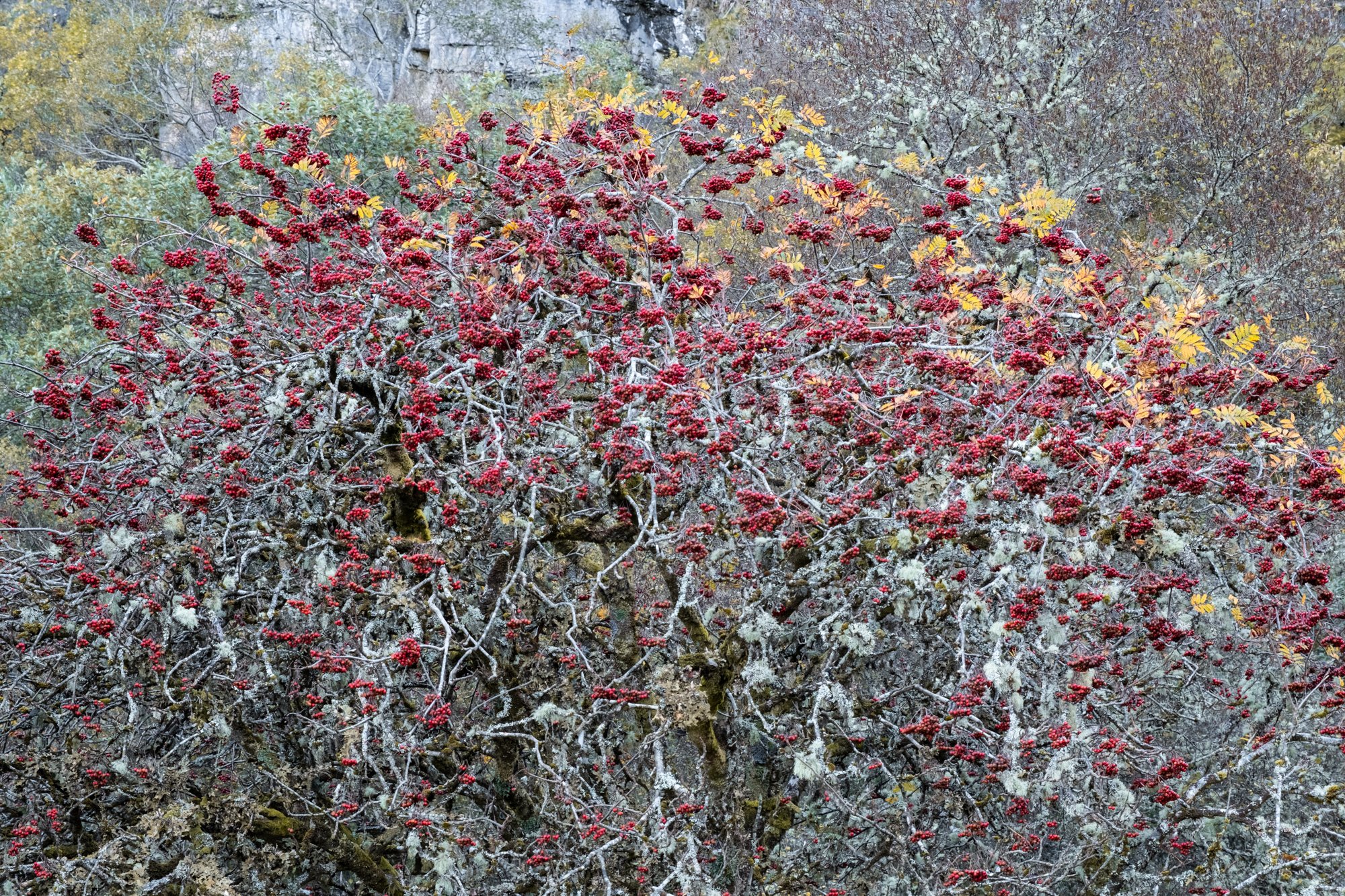October on the Island of Raasay and the rowans are in their full red-berried glory. Some, in sheltered places, are still clothed in green but most are only just clinging to their yellowed and browned-off leaves on traceries of bare branches.
It is the form of the compound leaves that gives rise to the other name, ‘Mountain Ash’ and although the rowan is unrelated to ash, the title is well earned since this hardy small tree can survive high up on mountainsides and hillsides, on crags and in rocky gullies. ‘Caorunn’ is the Gaelic name, or ‘Luís’ in the older Celtic tongue, which is the tree name assigned to the letter ‘L’ in the Gaelic tree alphabet.
In the woodland beside the burn down to Inver on Raasay’s west coast, the rowans have already lost most of their leaves and only the berries, hanging in bunches and glossy with raindrops, reveal them amongst the other native trees such as birch, hazel and willow. The bright red fleshy berries are attractive to birds and eaten by them. The hard seeds are then voided at some distance from the tree, often in unusual or inaccessible places such beside buildings, in ruins, on shingle banks or even in the forks of old decaying trees, anywhere they can take root away from grazing animals.
Along Calum’s footpath, which he built with his brother along the coast between the tidal island of Eilean Fladda and the old schoolhouse at Torran (north Raasay), there are many rowans; some are beside the sea, others grow high up from seemingly solid rock to overhanging the path and some reach for the sun from dark woodlands in a gorge below.
In folklore the rowan is a protective tree, believed to keep dwellings and livestock safe from witchcraft. Not surprising, then, that it is often found near buildings and growing in and through abandoned crofts and settlements. Even the ruined buildings associated with the old iron-ore mines have become adorned with rowans growing on or through the walls and crumbling steps.
Rowans also follow the road to the deserted village of Hallaig along a coastal path on the east of Raasay, with cliffs rising on one side and the sea far below on the other. In a sheltered spot, one old rowan still bears a mass of fruit beneath a crown of yellow leaves and among lichens decorating its branches.
The trees mould themselves to the terrain, tucking themselves into crevices where bracken and grazing sheep cannot reach, or stretching out their branches to dangle the berries over the sea.
Stone walls and enclosures are all that remain of Hallaig, laid out beneath Beinn na Leac, the distinctive highest point on Raasay. It was at Hallaig that the poet Sorley Maclean (1911-1996) was born and returning to the ruins many years later, he wrote the poem ‘Hallaig’. Wistfully he noted the boarded up window through which he used to see the burn and the woodlands of birch, hazel and the ‘straight young rowan’
















